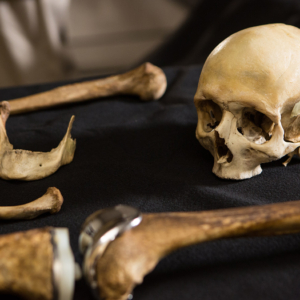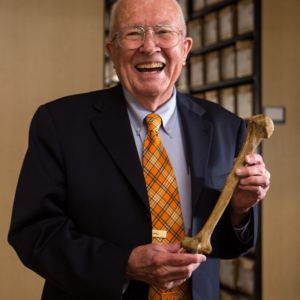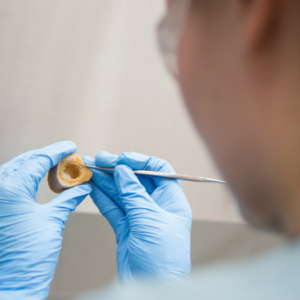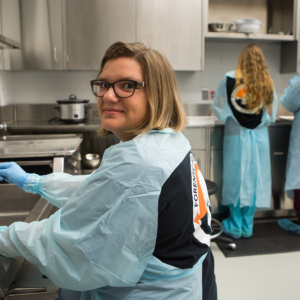No one has done more to help us understand what happens to the human body after death than Professor Emeritus Bill Bass.
Bill Bass and his students built the Anthropology Research Facility—more popularly known as the Body Farm—and began work with donated bodies in 1981. The facility is home to research on the effects of weather, water, trauma, and numerous kinds of burial, along with changes to the bodies themselves.
Bass’s work revolutionized forensic science—particularly for determining the time since a person’s death—and inspired several television dramas.
When Bass came to UT in 1971 as head of the Department of Anthropology and Tennessee’s first state forensic anthropologist, research on estimating time since death was scarce.
In 1977, his very flawed time-of-death estimate in a widely publicized case made Bass determined to develop research and expertise that would help all those who investigate deaths.
Investigators in that case initially believed that murder suspects were interrupted trying to hide a man’s body in a Civil War grave. Bass estimated the man had been dead for a few months to a year.
But the man’s embalming and burial in an iron casket fooled Bass. The body turned out to be Colonel William Shy, killed in a Civil War battle 113 years earlier. The suspects were not murderers, but would-be grave robbers.
After that experience, Bass increased his efforts to improve the understanding of human decomposition.
“I wasn’t walking down the street one day and a light shined and a voice said You need to start a body farm,” Bass said with a laugh. “I worked on it over time and there was a lot of hard work by my graduate students to make it happen.”
Early in their work, one of Bass’s graduate students produced a groundbreaking study on how insects respond to dead bodies. Another graduate student determined that a body’s bacterial breakdown creates a decomposition timeline.
“What we have done is applied science to the estimation of the length of time since death,” Bass explained.
He established the Forensic Anthropology Center (FAC) in 1987 to manage the department’s growing expertise. The center curates the largest collection of contemporary human skeletons in the US and oversees professional training, body donations, the William M. Bass Forensic Anthropology Building, and the Anthropology Research Facility.
Scholars, students, and law enforcement personnel from around the world come to UT’s body farm to learn about human decomposition and receive investigative training.
The body farm’s success drove the creation of a site in the Cumberland Forest dedicated to training law enforcement to find hidden graves. It is run by the Law Enforcement Innovation Center, a part of the UT Institute for Public Service.
“Sometime during my early career, I decided I wanted to be a college teacher,” Bass said. “I wanted to be a good teacher so students would enjoy themselves and learn and even have a laugh. It came naturally to me.”
Bass was named national professor of the year in 1985 by the Council for Support and Advancement of Education. At one time, he had trained about two-thirds of the country’s board-certified forensic anthropologists.
Although Bass retired as professor emeritus in 1997 after heading UT’s anthropology department for 29 years, he continued working part-time for another four years.
Research at the body farm continues to help investigators bring criminals to justice and answers to grieving families. A 2017 study revealed that microbiomes in the mouth could help scientists more accurately estimate time since death.
Five other universities in the US now have body farms, but UT’s will always be the first.
Updated: May 01, 2019





